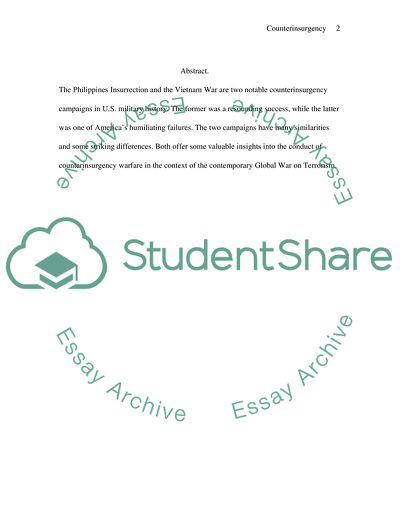Cite this document
(Counterinsurgency: The Philippines Insurrection and the Vietnam War Coursework Example | Topics and Well Written Essays - 1750 words, n.d.)
Counterinsurgency: The Philippines Insurrection and the Vietnam War Coursework Example | Topics and Well Written Essays - 1750 words. https://studentshare.org/history/1706448-compare-and-contrast-two-counterinsurgency-campaigns
Counterinsurgency: The Philippines Insurrection and the Vietnam War Coursework Example | Topics and Well Written Essays - 1750 words. https://studentshare.org/history/1706448-compare-and-contrast-two-counterinsurgency-campaigns
(Counterinsurgency: The Philippines Insurrection and the Vietnam War Coursework Example | Topics and Well Written Essays - 1750 Words)
Counterinsurgency: The Philippines Insurrection and the Vietnam War Coursework Example | Topics and Well Written Essays - 1750 Words. https://studentshare.org/history/1706448-compare-and-contrast-two-counterinsurgency-campaigns.
Counterinsurgency: The Philippines Insurrection and the Vietnam War Coursework Example | Topics and Well Written Essays - 1750 Words. https://studentshare.org/history/1706448-compare-and-contrast-two-counterinsurgency-campaigns.
“Counterinsurgency: The Philippines Insurrection and the Vietnam War Coursework Example | Topics and Well Written Essays - 1750 Words”. https://studentshare.org/history/1706448-compare-and-contrast-two-counterinsurgency-campaigns.


